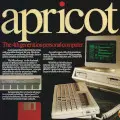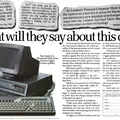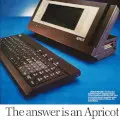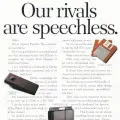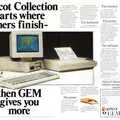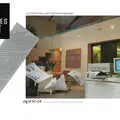
ACT/Apricot Advert - May 1986
From Personal Computer World
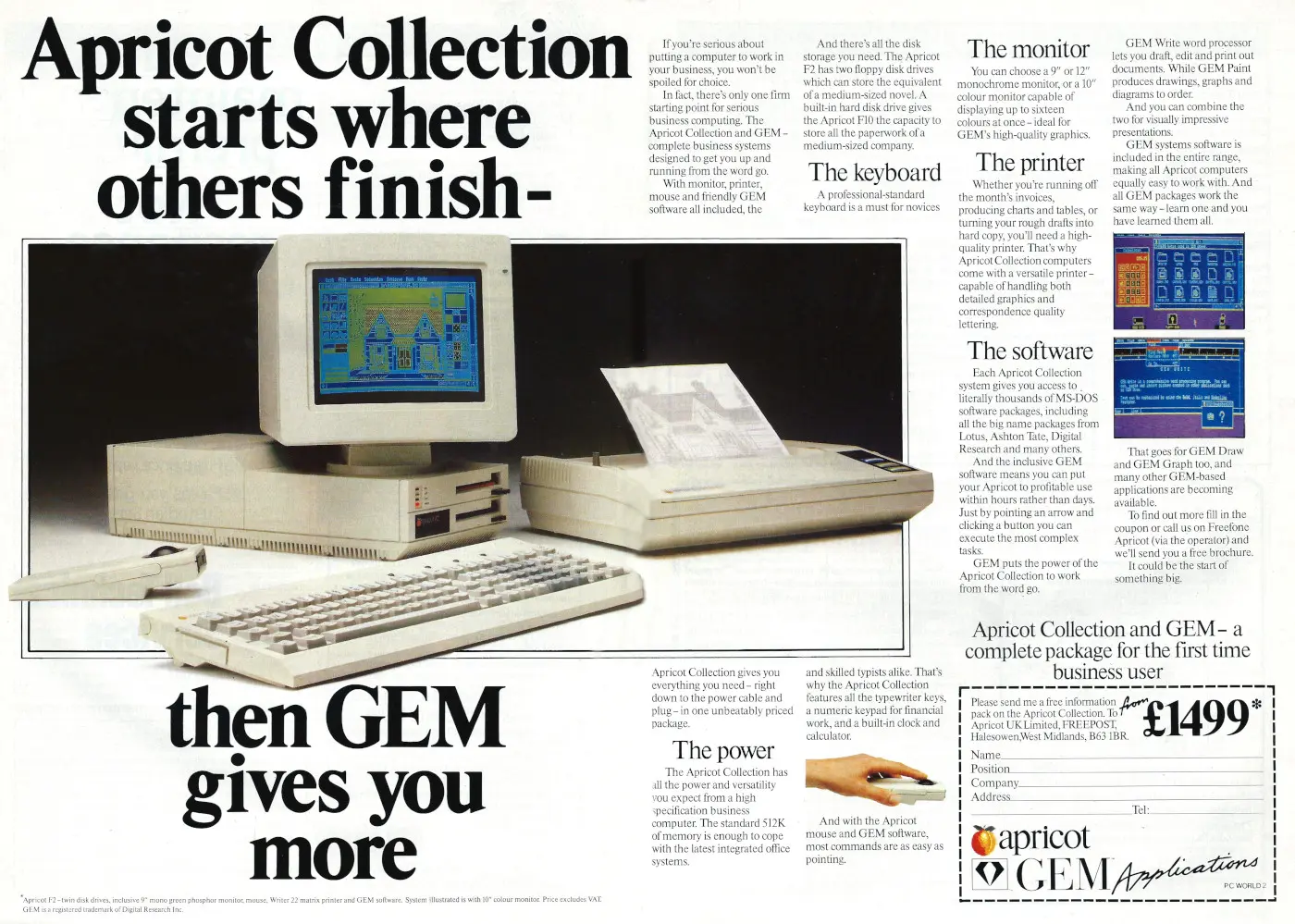
Apricot Collection starts where others finish - then GEM gives you more
This is an advert for an Apricot bundle - the "collection" - which includes the F2 micro, a monitor, printer, keyboard and a tracker-ball mouse.
The whole lot came together with Digital Research's GEM desktop "operating environment", which was a way of adding the whole WIMP - Windows, Icons, Mouse and Pointer - environment to PCs that didn't natively support it. It was most famously used on Atari's ST.
Apricot's F2 was a slightly cheaper version of the F10, which shipped with two floppy drives rather than a hard disk. It had its own modified version of MS-DOS, as it wasn't fully IBM compatible. The range of F micros was notable for its use of infra-red rather than cables to link together the keyboard and mouse[1].
The whole bundle retailed for £1,499 plus VAT, which is around £6,530 in 2025.
Apricot had beens struggling in a competitive market during 1985 and had ended up writing down £5.1 million of stock, mostly of its portable machine which had sold poorly, which combined to leave the company with a net loss of £4.6 million (£18 million) at the end of the year.
It had also laid off 100 staff from its UK operations and a further 20 in West Germany[2].
By the end of summer 1986 - not long after this advert - the company had lost 180 staff, whilst its loss had widened to £15 million.
At about the same time, the company called time on its "disastrous" American adventure by selling off its US offshoot - Apricot Inc. - following a loss of $14 million in its second year of operation.
Fortunately for Apricot, the parent company had only a 20% stake in Apricot Inc and had been "expecting some losses anyway". However, it didn't help itself by overstating its success in the US market, as even the year before observers had been suggesting that Apricot Inc was all but dead[3]".
Meanwhile, Apricot had also packed-in producing nearly all of its machines, which as well as the abandoned portable from the previous year included all of its F series and Xi machines, as it pulled out of the lower-end of the IBM PC market, suggesting (quite accurately) that that market had "become a commodity market".
Instead, it seemed to have given up attempting to be a "serious world contender" and was moving up market by chasing the gap in between micros and minicomputers, where the US-based Altos - one of relatively few companies to have survived since the 1970s - was still doing business.
Apricot's MD Brian Androlia summed it all up when he suggested to Guy Kewney that his company's change in fortune was "not the end of the world. We're still a stable company"[4].
Apricot collapsed later in 1986, but scraped through long enough to produce a new 80386-based machine in the early spring of 1988, when it launched its £4,000 (£14,000 in 2025) Xen-i 386 tower system[5].
Shortly after its financial scare it had released an 80286 version of the Xen-i system, but by the end of 1988 Apricot had decided that the '286 was no longer in its future, and it would only be selling 80386 machines.
The company was however keen to emphasise that it was "not getting out of the 286 market" but was simply "getting out of the 286 chip business - we'll be supplying the market for 286 machines with a 386 machine, that's all".
This was actually the 386 SX - a 16-bit chip internally, but with a reduced data bus externally[6].
When it eventually replaced the Xen-i with its Qi model at the beginning of 1989, it ensured that it stopped producing the older machines in plenty of time in order to run stocks down so as not be left with a glut of old machines nobody wanted - unlike previously when it had released the upgrade to its Xi model.
However, before the Qi and its entry-level alternative the Xen S were actually ready - as parts to build them were delayed - demand for the old Xen-i boomed thanks to a stock-shifting price cut, which led to Apricot shifting a reported 4,700 in a couple of months, shortly after which it promptly ran out of machines to sell, either old or new.
This led to a downgrade of Apricot's profit forecast - the second since January[7] - which triggered a run on Apricot's shares in the City.
Guy Kewney reckoned that the City would be back to buy Apricot shares towards the end of 1989 when the company was due to launch its first 80486 machine, but that meanwhile Apricot seemed to be sorting itself out by putting well-regarded people like its micro division managing director Ed Sherman in charge of dealer and customer relations[8].
New fruit on the tree
Apricot was eventually sold to Mitsubishi in the spring of 1990, a few months after it had - in a neat sort of book-ending - bought what was now a Unix system developer in the shape of Information Technology Limited, but which had been known as ACT in a previous life[9].
Apricot staff were keen to point out that the company's purchase by Mitsubishi had been because of Apricot's UK R&D, and not because it was a chance to turn Apricot into an straightforward outlet for Mitsubishi hardware.
At the same time, the newly-relaunched Apricot was finally moving into the burgeoning network industry, with the firm's research labs, headed by Peter Horne, expecting to find themselves "supplying the whole world with network equipment".
This included its new Lanstation series - a range of tiny 386SX machines which could run Windows or Unix entirely from the network.
Kewney of Personal Computer World reckoned that these weren't actually built for Apricot's customers, but were aimed at rival Compaq - the Lanstation appeared just a couple of months after Compaq's own Deskpro 386N, the N being for "network"[10].
Date created: 05 February 2024
Last updated: 22 January 2025
Hint: use left and right cursor keys to navigate between adverts.
Sources
Text and otherwise-uncredited photos © nosher.net 2025. Dollar/GBP conversions, where used, assume $1.50 to £1. "Now" prices are calculated dynamically using average RPI per year.
